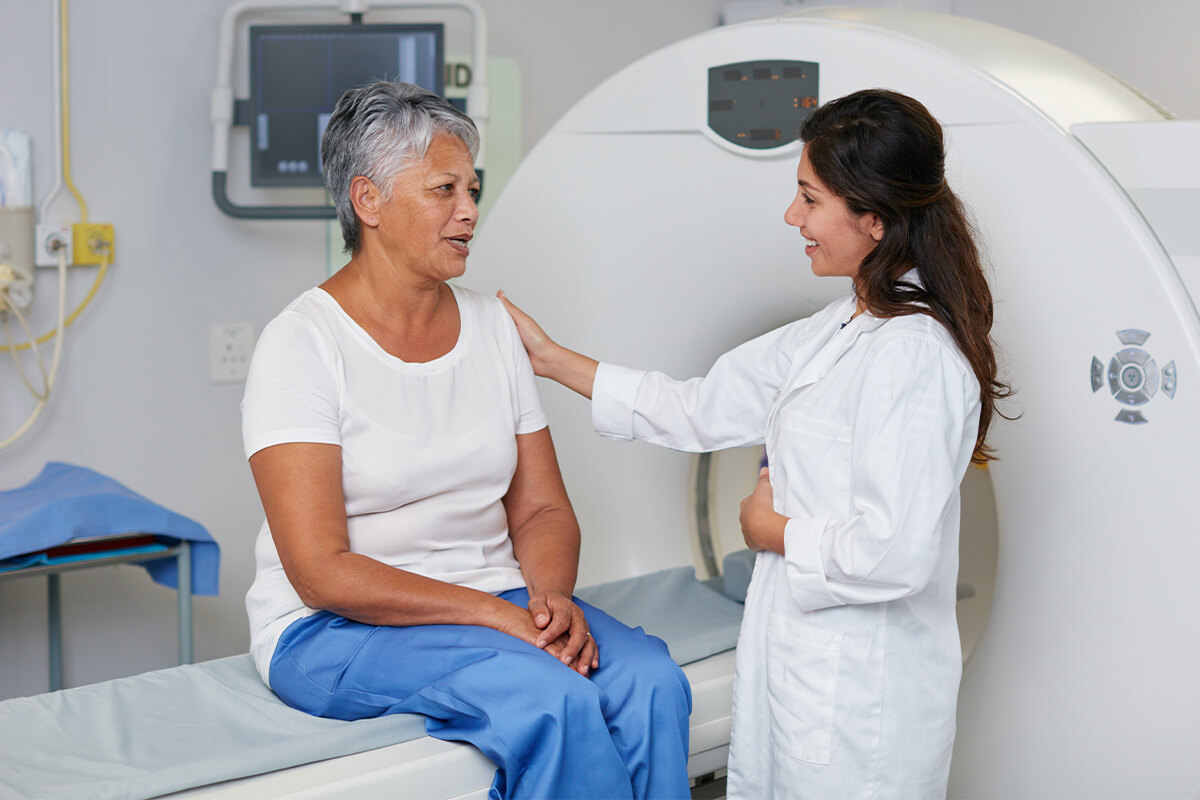Quest Imaging

There are photographers of all types — those who capture pictures of landscapes, animals and people. In Imaging and Radiology, technologists are photographers of the human body, using both radiation and sound waves to obtain images of the inner structures of the human body.
At Adventist Health Tehachapi Valley Quest Imaging, we utilize digital X-ray for diagnostic procedures, CT (Computerized Tomography) procedures, and for Ultrasonography in which ultrasonic waves are used. The imaging technicians and radiologists at Adventist Health Tehachapi Valley are the photographers of the body, and we work to assist in your medical care. We are always here for you.
To schedule an imaging appointment in Tehachapi, call(661) 633-5000.
3D mammography
3D mammograms produce better-quality images than conventional mammography. This helps our radiologists provide a more precise diagnosis. According to theJournal of the American Medical Association, the type of 3D mammography Quest Imaging offers has proven to be 41 percent more effective at detecting breast cancer than conventional 2D mammography alone.
CT scans
CT scanning is a process that uses multiple x-ray devices to create a more comprehensive image of the body. A patient will lie on their back as a circular gantry — sometimes called a donut — moves across their body while capturing images. The computer then processes the information to produce a cross-sectional image of the body part being examined.
Common uses for CT are:
- Inspecting the head for stroke and hemorrhaging
- Chest, abdominal and pelvic imaging to look for diseases of the liver, lungs and kidneys
- Studying the various arteries in the neck and legs
MRI
MRI uses a large magnet and radio waves —but no radiation —to make detailed images that show the differences between healthy and unhealthy tissue. It’s used for such tasks as diagnosing torn ligaments, tumors, and brain and spinal cord conditions, as well as for examining organs.
Common uses for MRI include:
- Diagnosis of torn ligaments
- Detecting tumors or brain and spinal cord conditions
- Examining organs
Ultrasound
In Ultrasonography, a sonographer places a small device on the proper area of the body. This device emits sound waves into the body and collects echoes as the sound waves bounce back. The computer uses this information to analyze the intensity of the returning sound waves and form an image of the area.
Common uses for ultrasound include:
- Inspecting for blood clots in the legs and arteries
- Detecting diseases and problems of the kidneys, gall bladder and liver
- Checking on the health of a growing fetus
X-Ray
An X-ray emits particles of radiation that pass through the body and onto an exposure sheet. More dense parts of the body will show up lighter, giving bones and other dense materials a white appearance.
Common uses for diagnostic radiology include:
- Examining the chest, skull, spine and all extremities
- Checking for signs of pneumonia, arthritis and fractures
Adventist HealthTehachapi Valley
1100 Magellan Drive
Tehachapi, CA 93561
All exams performed at Adventist Health Tehachapi Valley Quest Imaging are interpreted by American Board of Radiology certified Radiologists.